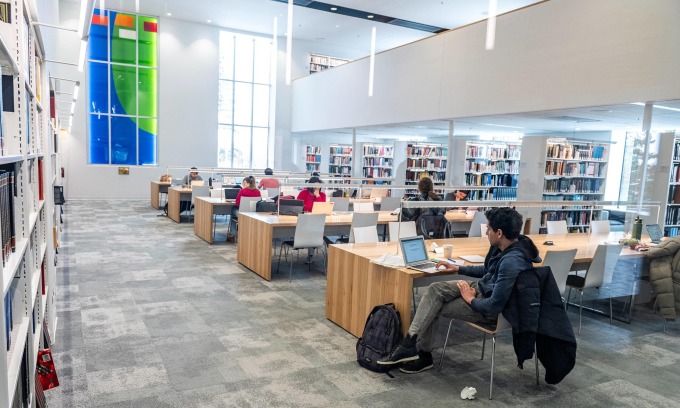Canada continues tightening student visa regulations, introduces new rules
The new cap applies to both master’s and doctoral levels, which together make up about 12% of the total approved student visas, according to an update on the Canadian Immigration, Refugees and Citizenship Canada (IRCC) website on Sept. 18.
Previously, the visa cap only applied to undergraduate students.
A new regulation allows spouses of master’s students to obtain work permits only if the student’s program lasts at least 16 months. Additionally, work permit eligibility will be restricted to the spouses of foreign workers employed in management, professional roles, or sectors facing labor shortages under Canada’s Temporary Foreign Worker Program (TFWP) and International Mobility Program (IMP).
Starting in November, applicants for post-graduation work permits (PGWP) will also be required to submit English or French language certificates according to the Canadian Language Benchmark (CLB), which has 12 levels. University graduates must score at least a 7, while college graduates will need a minimum score of 5, corresponding to B2 and B1 levels on the European framework, respectively.
Currently, university graduates can apply for PGWPs lasting up to three years, while college graduates are not eligible unless they work in professions facing long-term labor shortages. The Ministry of Immigration has indicated that more updates on PGWP requirements will be released soon.
These new regulations are part of Canada’s effort to reduce the share of temporary residents from 6.5% to 5% by 2026.
“To achieve this goal, the federal government is taking action to manage the increase of temporary residents and hold employers misusing the system accountable. The new restrictions will enable the immigration system to address emerging challenges, such as a weakening labor market,” according to the IRCC.
According to Marc Miller, Minister of Immigration, Refugees and Citizenship, the new regulations aim to “strengthen the temporary residence programs and roll out a more comprehensive immigration plan to meet the demands of today’s changing landscape.”
“Our immigration system must preserve its integrity, and be well managed and sustainable. And as we look forward, we will do everything it takes to achieve that goal and set newcomers up for success,” he was quoted in a release on the ministry’s website.
However, some industry insiders are concerned that these changes may undermine Canada’s ability to attract global talent.
Steve Orsini, president and chief executive of the Council of Ontario Universities, said he was concerned that further changes would “continue to erode Canada’s global brand as a premier destination for top talent”.
“Despite universities having acted responsibly, with leading practices in place to support international students while maintaining modest levels of international enrolment growth, these additional restrictions will only exacerbate the existing financial pressures on the sector,” he was quoted by Times Higher Education.
In a statement posted on X, Universities Canada said: “Cuts to international study permits damage Canada’s reputation as a premier education destination, impacting institutions nationwide.
“It’s time for this to be the final reduction, allowing Canada and its universities to focus on rebuilding our global brand.”
Isaac Garcia-Sitton, executive director, international student enrolment at Toronto Metropolitan University, told The PIE Newsthat he “truly hope this marks the end of the erratic policy changes introduced by IRCC in recent months, which have caused chaos and significantly impacted Canada’s reputation, leading to substantial enrolment losses this fall.”
“Canada has not met its set targets, and all stakeholders in our sector – institutions, faculty, partners, national associations, and most importantly, students –desperately need stability and predictability,”
“We need graduate students to support Canada’s research, innovation, and technology agenda, which is another barrier to global talent’s seamless mobility,” Vinitha Gengatharan, assistant vice president, global engagement & partnerships at York University, told The PIE News.
The number of international students with active study permits in Canada rose to 1,040,985 last year, a 29% increase over 2022, according to the IRCC.
This figure is nearly 10% higher than the government’s anticipated 950,000 students for 2023. India and China make up over half of Canada’s international student population, with 427,085 from India and 101,150 from China. The Philippines follows with 48,870 students, while Vietnam ranks eighth with 17,175.


Comments are closed.